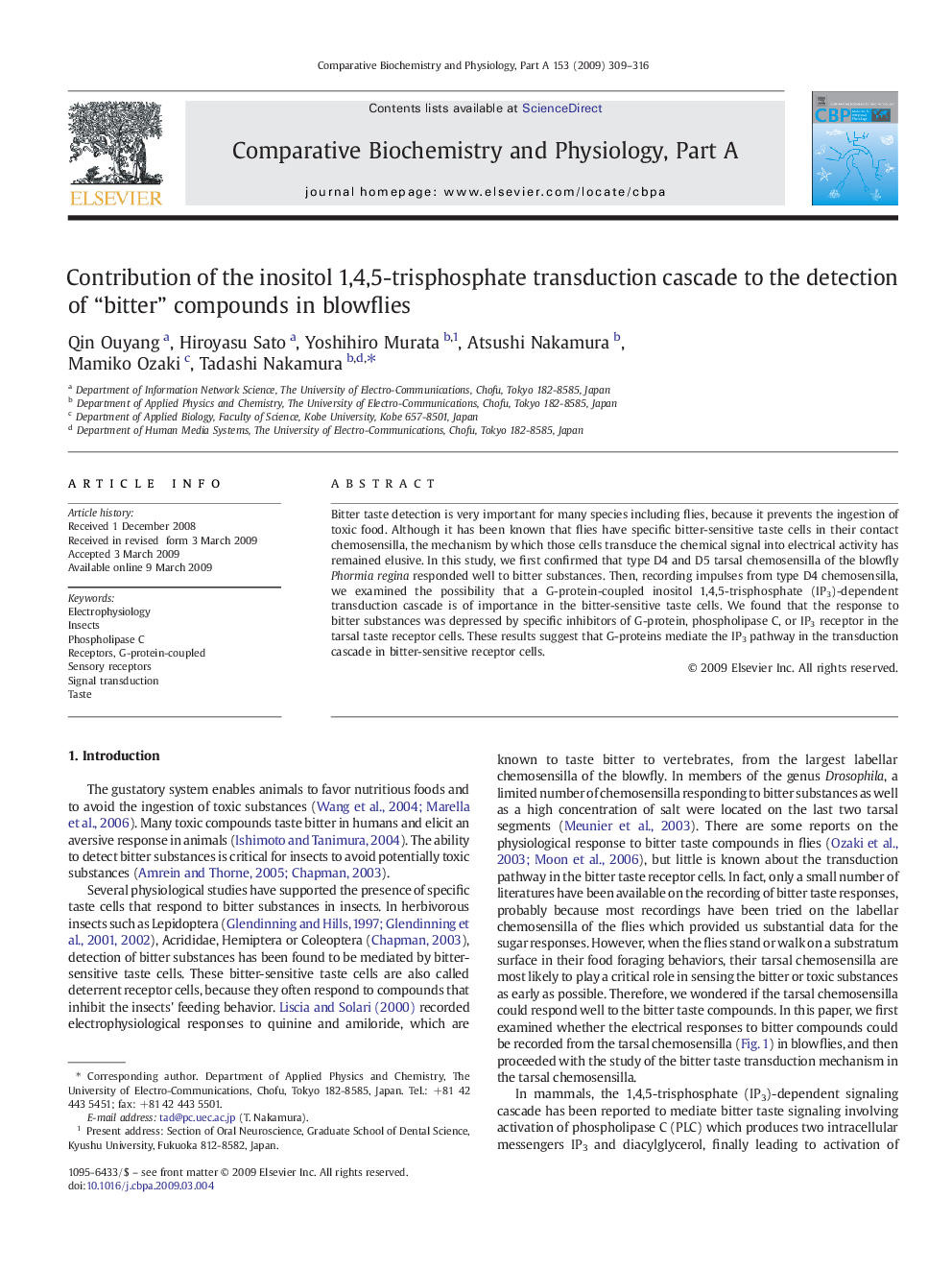| Article ID | Journal | Published Year | Pages | File Type |
|---|---|---|---|---|
| 1974590 | Comparative Biochemistry and Physiology Part A: Molecular & Integrative Physiology | 2009 | 8 Pages |
Bitter taste detection is very important for many species including flies, because it prevents the ingestion of toxic food. Although it has been known that flies have specific bitter-sensitive taste cells in their contact chemosensilla, the mechanism by which those cells transduce the chemical signal into electrical activity has remained elusive. In this study, we first confirmed that type D4 and D5 tarsal chemosensilla of the blowfly Phormia regina responded well to bitter substances. Then, recording impulses from type D4 chemosensilla, we examined the possibility that a G-protein-coupled inositol 1,4,5-trisphosphate (IP3)-dependent transduction cascade is of importance in the bitter-sensitive taste cells. We found that the response to bitter substances was depressed by specific inhibitors of G-protein, phospholipase C, or IP3 receptor in the tarsal taste receptor cells. These results suggest that G-proteins mediate the IP3 pathway in the transduction cascade in bitter-sensitive receptor cells.
